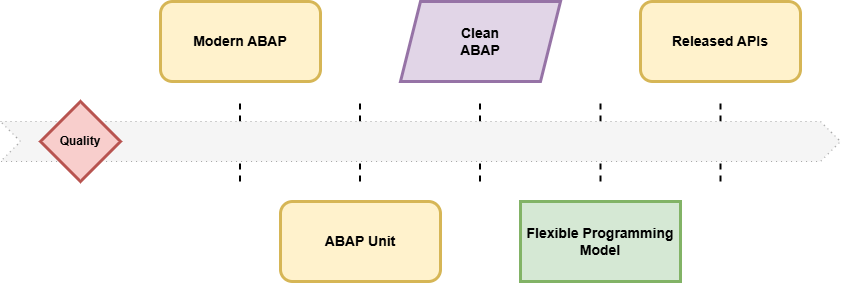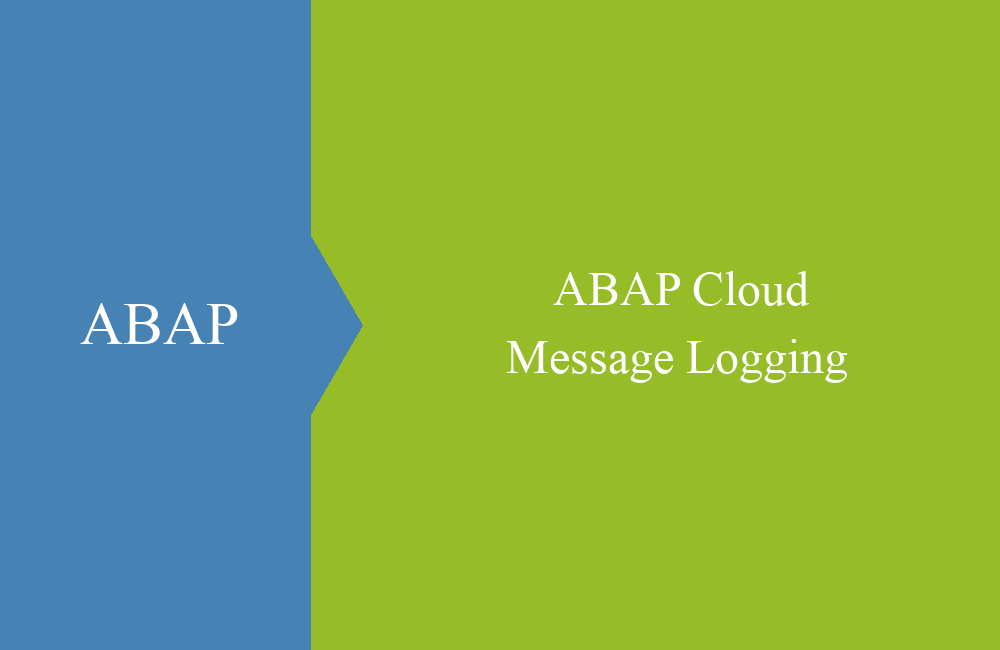
ABAP Cloud - Skills for the Start
When can you actually start with modern ABAP development, and what skills do you need at a minimum? Let's clarify this question together.
Table of contents
In this article, we'll take a closer look at the question: What skills are actually needed to get started with modern ABAP development? We'll look at various scenarios.
Introduction
At ABAPConf 2025, the question was asked: What skills are needed by a developer to get started with modern ABAP development and, if possible, to start with a clean core and/or cloud-ready environment? The question was somewhat surprising to us, as we usually have the complete picture of software development in mind and don't limit ourselves to the bare minimum, which might even mean compromising on quality.
As the cover image above shows, our pencils should always be sharpened so we can use them efficiently. To achieve this, we should also regularly improve our skills so that quality and expertise continually improve and we have additional color accents in our portfolio.
We wrote a somewhat similar article about the different roles on the path to ABAP Cloud. This article will once again address the question of how we can approach the topic minimally and then continuously develop further.
Level 1 - Minimum
So let's first answer the question: What do we need at a minimum to build a cloud-enabled application? In this chapter, we'll look at various points.
Skills
Basically, we must assume that we aren't starting from scratch, but have an ABAP developer who already masters classic development. If this isn't the case, then these two skills should be considered before starting. Fundamentally, we need knowledge of the ABAP Dictionary and how to create tables, data elements, and domains. These form the basis for the data model on which our applications are built. ABAP OO is also required, as we use classes to implement behavior.
As a basis, we then need the ABAP Development Tools, as Core Data Services and RAP development only work in the new environment. In general, we would advise against familiarizing yourself with SE80 at this time, as it no longer has a future and the time would be better spent on the new topics.
To begin development, you need Core Data Services to create your data model and model it for the UI. Finally, you create the behavior with the ABAP RESTful Application Programming Model (RAP) and can create additional functions such as validations, determinations, or actions.
You can then complete your application relatively closely using the preview function, although you will then have to switch IDEs for the final step. The application is generated in the Business Application Studio (BAS). You should have some experience with Fiori Elements to understand the actual application and deployment.
Basics
With this minimum, you can now create your first small Fiori applications based on RAP. However, we have currently omitted a large portion of the ABAP Cloud know-how. Therefore, you will need another person in the company who has an overview of the topics and can guide the developer further. This person should understand the concepts of ABAP Cloud, have introduced the 3-TIER model, and keep an eye on the APIs used. Without these fundamentals, Tier 3 applications can still emerge in the system, even though you might not want them at all.
Level 2 - Quality
Now that we've mastered the minimum, we should improve code quality. Currently, we can provide RAP applications, but these aren't well-tested, and we may still be using old statements from ABAP development. Perhaps you're not even following best practices when creating your objects.
There are now many statements in ABAP that have had successors. Modern ABAP has been around for a long time, but it's worth checking out which statements are still current and what you might want to leave out. There are plenty of new features to learn to become even better at development. During this phase, you should look at Clean ABAP and ABAP Unit. Clean ABAP applies many best practices of modern ABAP development. With ABAP Unit, you write testable applications that can later be tested automatically, thus saving time on maintenance. With ABAP Unit, you also learn what's important for writing testable code. This allows you to add unit tests later, even if you didn't think of it at first.
When working with ABAP Cloud, the released SAP standard APIs are very important. Where can you find the right APIs? What implementation options do you have? What's the best way to find successors to the classic APIs? These questions are important for creating clean core applications and running them smoothly in Tier 1. If you're on-premises or in a private cloud, you should also consider wrappers.
If the standard floorplan in Fiori Elements isn't enough for you, you shouldn't start with a freestyle application right away. Instead, make sure you extend your existing application with the Flexible Programming Model. For OData v4 applications, this is a simple standard for extending your application with additional functions.
Level 3 - Finalization
The final phase is about rounding out the skills acquired and deepening various skills that we need in our daily work as Clean Core developers.
To do this, you should master the theory of Clean Core, find the appropriate APIs, and be able to build clean applications. The concept of software components helps you structure the various extensions in the system and clearly separate the developments from one another. The XCO Libraries are the masterclass of usable APIs. They aren't necessarily easy to learn, but they offer a wide range of usage possibilities.
Key user apps are also an important component when extending the system; they should usually be tested first before creating an extension to the system. They are the first choice for extending the standard with new fields, as they carry out the extension from the database to the API to the UI.
If you have only built your applications on-premises so far, a side-by-side application might be another requirement. In this case, you should be familiar with the BTP and the various options for implementing such applications with RAP or perhaps CAP. If we were to limit ourselves to the bare minimum, we would also recommend starting with RAP with the SAP BTP ABAP Environment, simply because otherwise a large number of topics would have to be learned again.
Guideance
We still recommend taking a look at the whole thing. While you can start with development with a bare minimum, you'll be missing out on aspects like software quality and governance regarding Clean Core. We can therefore recommend the following topics for further learning:
- Learning Roadmap - Contains the complete overview and the path towards ABAP Cloud and Clean Core.
- ABAP Cloud Concepts - Understanding the concepts that are possible and what you should no longer use. Gives you an overview of the numerous successors to the various areas.
- Roles - An article that further divides the Learning Roadmap into the various roles and is intended to help you with the topics to be learned.
- New Topics - Do you want to learn the new topics and are looking for different sources? In this article, we will address various facets.
- Personal Development - Finally, everyone undergoes personal development. There are different phases of responsibility and knowledge, and here's a short guide.
Conclusion
To get started with modern development, you don't need many different skills, but the topics already have a steep learning curve. Once you've mastered the initial topics, you should continue to invest in code quality and efficiency.







